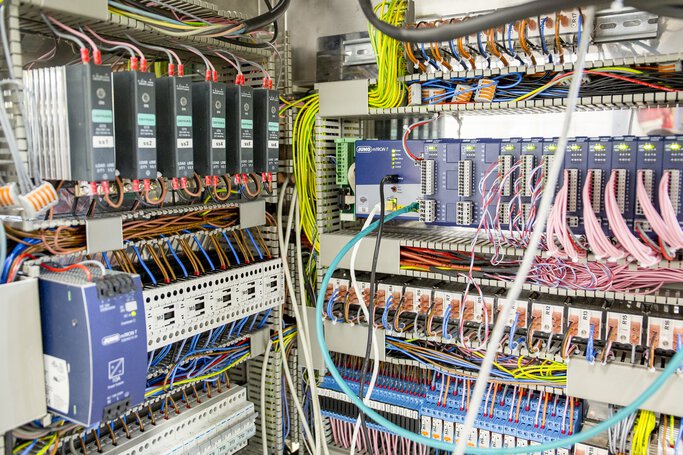

More efficient, effective and economical fermentation bath
Large dairies have their own pilot units where new products are made in miniature before going into production. An important part of such a pilot factory is the fermentation bath. Hettich Benelux recently manufactured a new fermentation bath that functions many times more efficiently and effectively thanks to the JUMO mTRON PLC system. Jack van Liempt is a project engineer at Hettich Benelux. They make all kinds of equipment where temperature, RH, CO2 and other climate parameters must be controlled. These can be climate cabinets for greenhouse horticulture, but their equipment is mainly used by companies that have an in-house lab.
Task
One of the products that the company has been working on is a fermentation bath for a large dairy factory. The fermentation bath is actually a test bed for developing a new type of dessert before putting it into production in the main factory. The most important part of the production process, fermentation, can be simulated on a small scale in this set-up. In practice, all kinds of flavours and variations in the process are experimented with in this set-up. Especially the temperature and the pH-value are crucial in a fermentation process. They help determine the structure and also partly the taste. Making yoghurt, for example, requires a whole cycle of heating, stirring, cooling and so on. We can control and monitor these processes perfectly in a fermentation bath.

Temperature sensor in one of the fermentation baths

One of the compartments. The dairy product to be fermented can be heated very quickly by a combination of electricity, hot water and steam injection.
Solution approach
Previously, you needed a separate controller for each individual parameter: one for your pH, one for your temperature, four in total. In a fermentation bath like this, there are six separate compartments, so for each compartment you have to install a number of separate controllers. Eventually, you end up with an enormous control panel with twenty-four controllers that is not very intuitive and well-organised. Hettich Benelux opted for a different approach: automating the fermentation bath with JUMO equipment. With the mTRON PLC system, all those twenty-four controllers you had before are replaced by one central system. You have a CPU, to which you can link a module for each parameter that you want to measure and control. The number of modules is easy to expand and, what's more, all the parameters you measure can now be logged very easily.
The software of the mTRON system has been developed in such a way that it can be programmed relatively easily by the end user himself.
The PID control in the PLC is pre-programmed by JUMO. The entire control structure with JUMO is already built into the control module, which makes it possible for Hettich Benelux to work with the PLC.
New to this application of Hettich Benelux is the use of the digiLine sensors, with the great advantage of saving time and information on wiring. Each sensor has its own IP address, which allows for fast visibility of values, failure and replacement. The use of an inverter is also no longer necessary.

An analogue limit switch prevents the temperature from exceeding a certain critical value.

The mTRON system at work. Below left, the power supply. Then the CPU, the various modules, I/O cards and a number of pt100 inputs.
Project outcome
In the past, delays and intervals required all sorts of complicated constructions with timers. Now it is just a matter of reprogramming, not much more complicated than the timer on your dishwasher. That makes the work in such a lab much more effective and efficient. The efficiency is not only in working in the lab. Production has also become more efficient thanks to the implementation of a PLC. The hardware is also cheaper now. One PLC costs less than twenty-four separate controllers.
Data is now much easier to call up by the user. Especially in a fermentation process, it is extremely pleasant to be able to go back in time very quickly to look up a pH value, for example. When fine-tuning a dairy product, you simply need this quick access to data.
- ${title}${badge}



